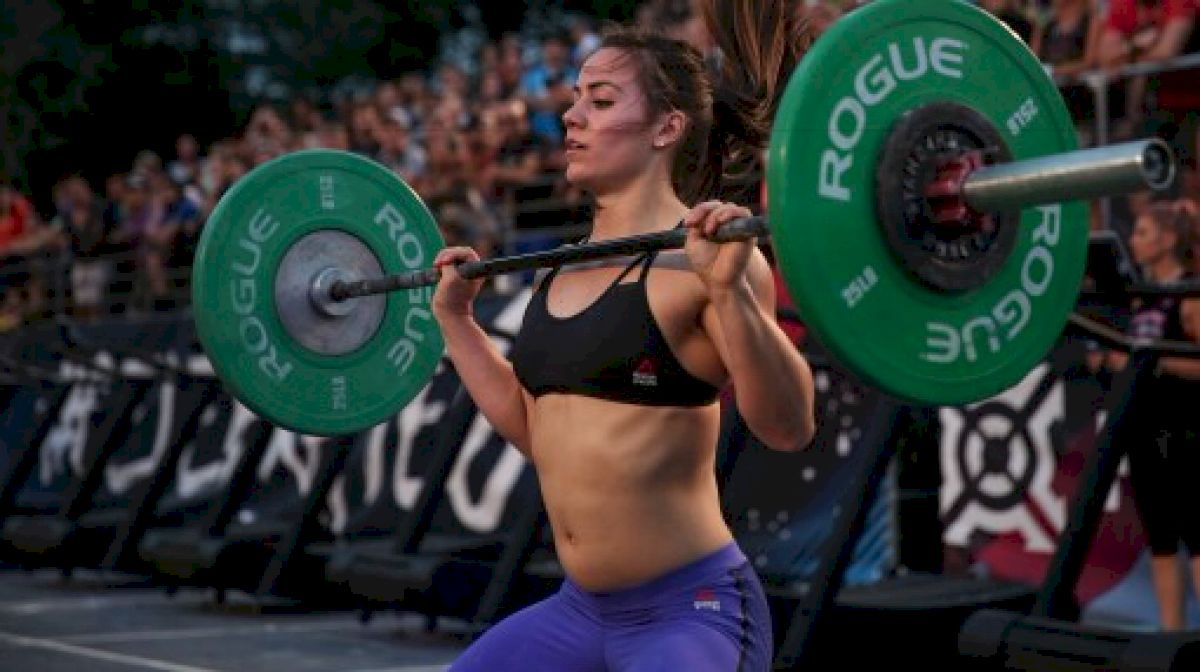CrossFit Games Open 18.5 Strategy By TZ Strength
CrossFit Games Open 18.5 Strategy By TZ Strength
Here is a breakdown of 18.5 including analysis of Annie Thorisdottir's performance, a useful strategy for everyone, and a full warmup.

There was no write-in option for the 18.5 voting, so I didn’t get to officially nominate 4 Mile Run as sa candidate. This so-called democracy is a sham! But hey, at least you guys don’t have to do 13.5.
For 18.5, I chose to track Sara Sigmundsdottir, because everyone’s got a favorite Dottir. The media team disagreed with me, however, and the camera panned away from her too many times for me to get an accurate assessment, so I went back and followed Annie Thorisdottir. Here’s what we’ve got.
Analysis
Round | Movement | Split | Rep Breaks |
3 | Thruster | 0:06 | 3 |
3 | Chest-to-Bar | 0:06 | 3 |
6 | Thruster | 0:13 | 6 |
6 | Chest-to-Bar | 0:09 | 6 |
9 | Thruster | 0:15 | 9 |
9 | Chest-to-Bar | 0:14 | 9 |
12 | Thruster | 0:25 | 12 |
12 | Chest-to-Bar | 0:17 | 12 |
15 | Thruster | 0:32 | 15 |
15 | Chest-to-Bar | 0:20 | 15 |
18 | Thruster | 0:52 | 10, 8 |
18 | Chest-to-Bar | 0:43 | 10, 8 |
21 | Thruster | 1:18 | 9, 7, 5 |
21 | Chest-to-Bar | 0:59 | 11, 6, 4 |
24 | Thruster | – | 10 |
24 | Chest-to-Bar | – | – |
Notes
Split times for each movement are taken when the athlete completes each set. Transitions are therefore accounted for at the beginning of each movement. i.e. the time for the chest-to-bar pullups includes the time it takes the athlete to set down the barbell and get to the pullup bar.
This is all hand timed and imperfect, but sufficient for our purposes.
Nothing surprising here. Thorisdottir displayed excellent mechanics, consistency in pacing, and stunningly high capacity – all things we’d expect from one of the most successful CrossFit athletes of all time.
A couple of things worth pointing out. First, Thorisdottir broke both movements well before failure, and her rests were controlled. This seems obvious, but on a workout such as this one, it’s important. That’s because it’s very easy to look at this workout and not realize just how much of your volume will come in the later rounds, leading you to push hard well before it’s worth it and causing a lot of fatigue for very little value.
If you complete the round of 21, you will have performed a total of 168 repetitions between both movements. The first three rounds total just 36 repetitions. The Dottirs were done with that in just over one minute. The fourth and fifth rounds add another fifty four repetitions, for a total of 90. That means that in just the final two rounds (18 and 21), you will have performed 78 repetitions - or about 46.5% of the total volume of the event. In short, you need to act like it. Don’t get carried away in the early rounds. Treat the sets of 3, 6, and 9 like an extended warm-up, moving smoothly, focusing on breathing and establishing a rhythm. As the sets get bigger, your goal will simply be to stay in that rhythm and hold your pace, before pushing to redline in the finish.
Output Management
Thruster: Whether it happens in the round of nine or the round of twenty-one, the thrusters get challenging for everyone eventually. There are essentially two ways to go about pacing them: you can either rest at the top, carefully controlling your breathing and keeping your reps at a smooth and constant pace, or you can move a little more quickly through your reps and actually drop the bar between sets. I’m not convinced that one method is inherently superior to the other. Thorisdottir chose to drop the bar relatively early and it seemed to pay off for her, but I don’t think that’s sufficient to extrapolate more generally. I do think there are some guidelines which may indicate that one or the other option is better for you.
If you generally have trouble stabilizing loads overhead, it’s probably not a good idea to use the overhead position to rest– even with relatively light weight. If you are not good at controlling your breathing at high heart rates, you are probably going to want to drop the bar to recover.
If you have a comfortable, locked in overhead position and great breath control, but don’t do a good job of forcing yourself back onto the bar after a rest, holding the overhead position may be suitable. For resting in this fashion, it helps to have a clear idea of how long you’ll rest at the top. I recommend using the clock (one second should be sufficient, two at most), but if you can’t manage watching a clock mid-thruster, count controlled breaths instead.
Either way, break the thruster – whether by pausing at the top or dropping the bar – before you’re forced to. For just about everyone, there will come a point where staying truly unbroken will not longer be feasible. Recognize when you’re approaching that point, and head off failure at the pass by breaking on your own terms.
Chest-to-Bar Pullup: Fundamentally, the same rules apply here. Recognize when the point you’ll be forced to break your sets, and cut it off at the pass by breaking before then. Unlike the thruster, however, there isn’t a second option for resting besides just coming off the bar (unless you want to try hanging between reps – I do not recommend this strategy.) For some athletes, the chest-to-bar may break down sooner and more dramatically than the thruster. But fear not! The cost of breaking sets on CTBs is considerably lower than it is on thrusters, since you neither have to rest under tension nor perform the additional work of picking the bar back up between sets. If you are not among that rare elite who won’t see broken sets until 18 reps or further, it will serve you well to go to smaller sets fairly early, keeping your rests short, strict, and (for the last time in 2018) on the clock, not in your head.
Technical Considerations
It seems redundant to say so, but great mechanics will go a long way here. Thrusters and pullups are a classic combination because they’re antagonistic in a way that makes both movements much more challenging, as well as driving your heart rate through the roof. Staying technical will allow you to maintain your pace much more effectively.
Thruster: At the bottom, make sure your weight is evenly balanced across the foot so that you sit comfortably into the squat. As you stand, time the leg drive and be aggressive with it from the get-go, to keep your shoulder fatigue down. Take careful note of your breathing patterns – do not hold your breath! Personally, I’ve found that a slight exhale at the bottom is helpful, but if you’re not comfortable with that, just make sure that you are breathing in a regular and rhythmic fashion. Finally, be diligent in your lockout. At light weights, it’s very easy to short the lockout and get a no-rep. Especially since this workout rewards smooth, deliberate movement moreso than fast movement, be certain to make every rep count.
Chest-to-Bar: Death gripping will be the death of you. You want to keep your hands, forearms, and upper back relaxed, both to avoid causing undue local fatigue and to ensure that your kip is doing as much of the work as possible. Focus on maintaining tension through your midline and controlling your breath.
Other Notes
Set-Up: As obvious as it gets – your pullup bar and barbell should be close together, and for absolutely optimizing transitions, you’ll perform pullups facing the opposite way than the way you face during thrusters.
As Always: Read the standards. Read them again. Watch the videos. If they’re relevant for you, make sure you fully understand the filming standards and make sure that you have a time established at your gym where you can expect to perform the workout uninterrupted. Don’t force yourself into an unnecessary redo because you didn’t do your homework.
It’s been a pleasure writing these strategies for the 2018 Open. I hope you’ve found them useful. If you’re interested in taking your training to a new level in 2019, have a look here and drop me a line.
Here’s to a strong finish to the 2018 Open!
18.5 Warm Up
Assault Bike 2000m (easy pace) + 30 Single Arm Overhead Walking Lunges, light and controlled, alternating arms every 5 steps + 30 Hollow Rocks
3 Rounds:
0:45 Assault Bike (slightly harder pace than 2000m, get those quads working)
10 Thrusters, empty bar, pause at bottom and top
10 Tap Swings on Pullup Bar, focus on keeping hands relaxed and tension through midline
EMOM 10, alternating:
2-4-6-8-10 (add two reps each set)
2-4-6-8-10 Chest-to-Bar Pullup (add two reps each set)

About The Author: Jacob Tsypkin is the owner of TZ Strength. He began CrossFit in 2005, owned a gym for seven years, and switched to programming and remote coaching full time in 2014, after realizing he was just truly bad at mopping floors. In his free time, Jacob can be found battling fellow wizards at Magic: The Gathering, pontificating at the intersection of epistemology, ethics, sport, and training on his blog Exercise Philosophy, or practicing making coffee for when he and Armen duel at the World Coffee Making Championships.